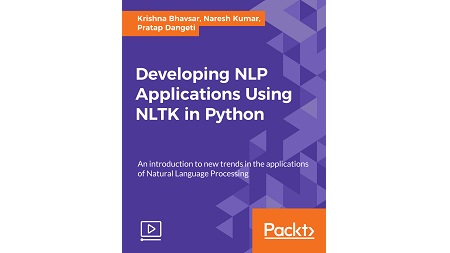
English | MP4 | AVC 1920×1080 | AAC 48KHz 2ch | 1h 17m | 275 MB
Learn a practical viewpoint to understand and implement NLP solutions involving POS tagging, parsing, and much more
Have you ever faced challenges in understanding language and planning sentences while performing Natural Language Processing? Do you wish to overcome these problems and go beyond the basic techniques like bag-of-words?
Well, now you can. This course is designed with advanced solutions that will take you from newbie to pro in performing Natural Language Processing with NLTK. In this course, you will come across various concepts covering natural language understanding, Natural Language Processing, and syntactic analysis.
It consists of everything you need to efficiently use NLTK to implement text classification, identify parts of speech, tag words, and more. You will also learn how to analyze sentence structures and master syntactic and semantic analysis.
By the end of this course, you will have all the knowledge you need to implement Natural Language Processing with Python.
The standalone solutions of this course will teach you how to efficiently perform Natural Language Processing in Python. It covers state-of-the-art techniques necessary for applications in NLP. Addressing your common and not-so-common pain points, this is a course that you must have on your library.
What You Will Learn
- Build solutions such as text similarity, summarization, sentiment analysis and anaphora resolution to get up to speed with new trends in NLP.
- Write your own POS taggers and grammars so that any syntactic analyses can be performed easily.
- Use the inbuilt chunker and create your own chunker to evaluate trained models.
- Create your own named entities using dictionaries to use inbuilt text classification algorithms.
- Combine various lessons and create applicable solutions that can be easily plugged into any of your real-life application problems.
Resolve the captcha to access the links!